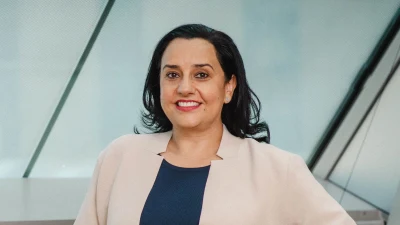Putting the income back in fixed income



Global X’s Marc Jocum unpacks why investors are flocking to fixed income, as the asset class offers the potential for higher yields than its equity counterparts.
Rising interest rates, coupled with market volatility, have enabled fixed income to flourish in 2024, both domestically and globally. For example, the Bank of America recently discovered that fund managers are now the most overweight to bonds since December 2023.
Speaking to Money Management, Marc Jocum, product and investment strategist at Global X ETFs, observed the increasing demand for domestic fixed income investments.
While Australian investors tend to have an under allocation in fixed income compared to their global peers, Jocum expects this to change as they flock towards the asset class. Currently, Australian investors hold around 14 per cent of their portfolio in bonds compared to 30–40 per cent by investors overseas.
“Investors, all of a sudden, are drawn to fixed income because the income really is back in fixed income. We’ve seen rising interest rates in the last couple of years, and it looks like in Australia that interest rates may be higher for longer versus the US and other developed markets that have already started their easing cycle. So we’ve definitely seen quite a big flavour going into domestic fixed income,” he explained.
There are two key drivers behind domestic investors’ rising preference for fixed income, Jocum noted: its defensive capabilities and attractive yield profile.
“[Now] is a great time for fixed income and there’s a few reasons for that. Number one: certain types of fixed income can act as a defensive asset in client portfolios. If macroeconomic events or geopolitical tensions are going to cause some share market volatility, bonds tend to act as a diversifier and can help cushion your portfolio when share markets fall,” the investment strategist said.
Secondly, fixed income is offering an attractive yield profile to investors, contrasting recent uncertainty within share markets.
Jocum continued: “A few years ago, bonds were yielding 1–2 per cent, whereas now they’re yielding around about 4 per cent in terms of government bonds. If you look at other things like corporate bonds, floating rate notes, subordinated debt and hybrid securities, investors can get up to 6–7 per cent returns.
“I think that’s really important, especially in today’s environment where we’ve actually seen the dividend yield on the Australian share market fall to the lowest level it’s been in the last few years.
“Now you can get the same level of yield, if not a better yield, by owning the debt instrument of companies – so the corporate bond aspect of it – versus the equity part of a company.”
While equities still outperform bonds in the long term, fixed income assets have the potential to outperform the share market on occasion, he added.
“That’s why it’s important to have a range of different assets in your portfolio, in which fixed income is one of them.”
Recommended for you
Two Australian active fund managers have been singled out by Morningstar for their ability to achieve consistent performance and share price growth in the past 12 months.
Pinnacle Investment Management has expanded its private market coverage, forging a strategic partnership with a private markets manager via a 13 per cent stake acquisition.
Active fund managers without a strong distribution platform will be “left behind”, believes Magellan, as it pivots its business away from being a traditional asset manager.
Ethical investment manager Australian Ethical has announced the appointment of Anthony Lane as chief operating officer.











